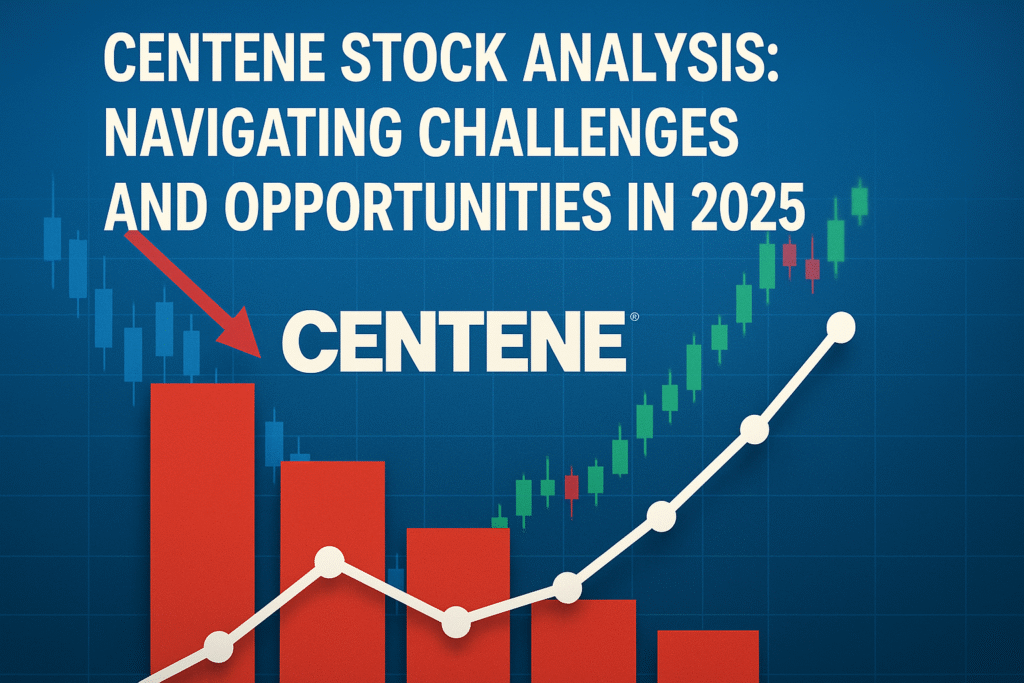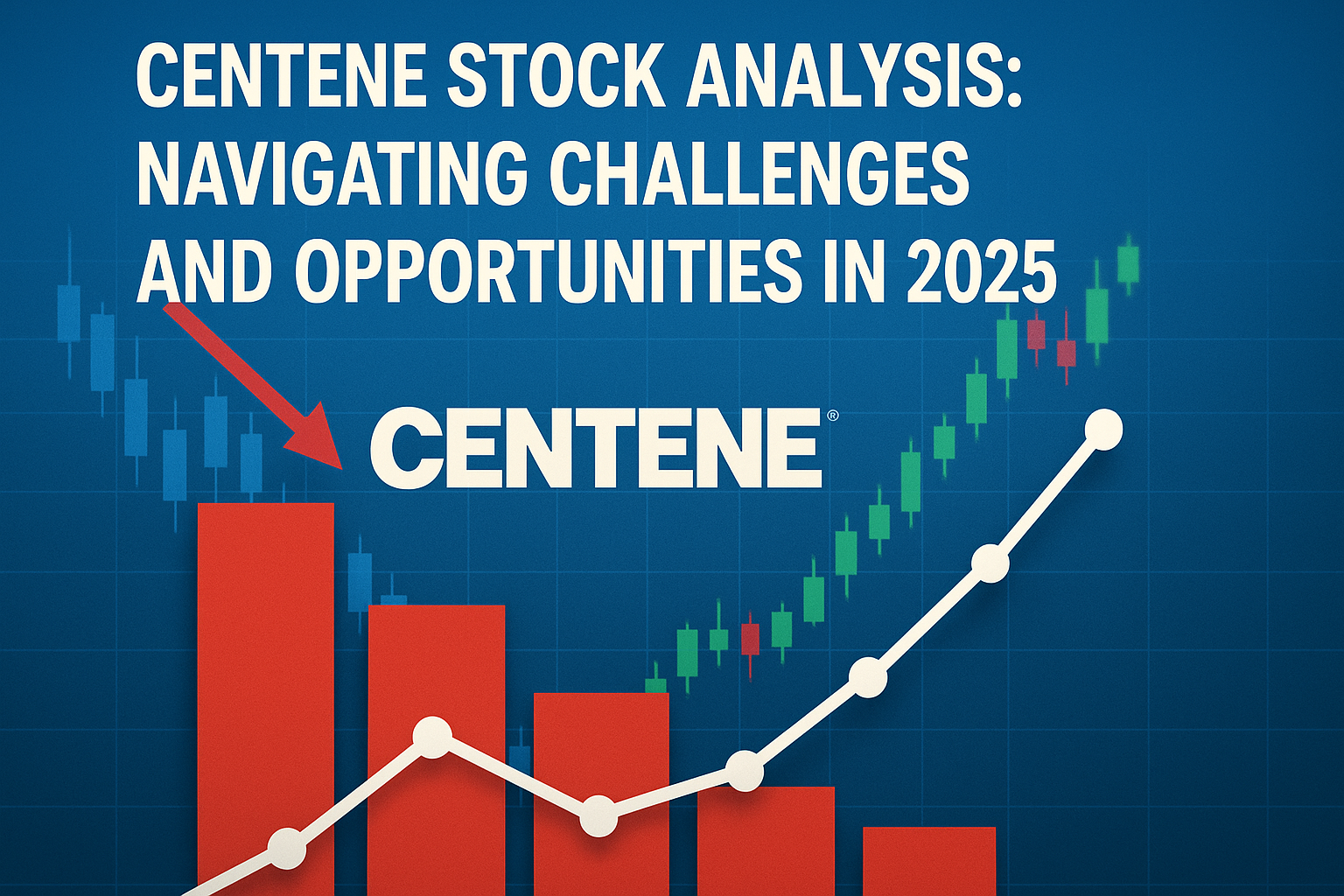Centene Corporation (NYSE: CNC), a leading managed care organization, has experienced significant volatility in its stock price in 2025, making it a focal point for investors. As of July 3, 2025, Centene’s stock price stands at $34.37, reflecting a sharp decline from its 52-week high of $80.59.

This article provides an in-depth analysis of Centene’s stock performance, the factors influencing its valuation, and its investment potential, drawing on recent financial data and market sentiment.
Company Overview
Centene Corporation, headquartered in St. Louis, Missouri, is the largest Medicaid insurer in the United States, serving over 22 million members as of December 2024. The company operates across four primary segments: Medicaid, Medicare, Commercial, and Other. Its Medicaid segment, which accounts for approximately 60% of its membership, provides healthcare services to low-income families, children, and individuals with disabilities.
The Medicare segment offers plans for seniors, while the Commercial segment focuses on health insurance marketplace products. The Other segment includes pharmacy services, vision, dental, and behavioral health offerings. Centene’s business model thrives on government-sponsored programs, positioning it as a countercyclical investment that can benefit from economic downturns through increased Medicaid and exchange enrollments.
Recent Stock Performance
Centene’s stock has faced significant headwinds in 2025, as evidenced by the finance card above. The stock closed at $34.37 on July 3, 2025, down from $54.15 on June 30, 2025, and a stark contrast to its 52-week high of $80.59. Over the past month, the stock plummeted from $55.60 on June 3, 2025, to its current level, reflecting a roughly 38% decline. Over a one-year period, the stock has dropped significantly from $76.92 in July 2024, underscoring a challenging period for the company.
The primary catalyst for this decline was Centene’s unexpected withdrawal of its 2025 earnings guidance on July 2, 2025. The company cited new data from 22 of its 29 marketplaces, indicating slower enrollment growth and higher-than-expected patient morbidity.
This led to a projected $1.8 billion impact on 2025 results, equivalent to a $2.75 reduction in adjusted earnings per share (EPS) from the previously forecasted $7.25. The announcement triggered a 30% plunge in stock price on July 2, 2025, marking its lowest level since 2017.
Financial Metrics and Valuation
Despite the recent downturn, Centene’s valuation metrics suggest potential undervaluation. The stock’s forward price-to-earnings (P/E) ratio is approximately 7.2, significantly lower than the industry average of 12.03. Its price-to-earnings-growth (PEG) ratio of 0.63, compared to the industry’s 1.12, further indicates that the stock may be undervalued relative to its growth prospects. Centene’s market capitalization stands at $26.63 billion, reflecting a substantial reduction from earlier in the year.
In 2024, Centene reported a full-year adjusted diluted EPS of $7.17, a 7% increase from $6.68 in 2023. Premium and service revenues grew by 3% to $36.3 billion in Q4 2024, driven by Medicaid rate increases and membership growth in the Commercial Marketplace.
However, the health benefits ratio (HBR) rose to 89.5% in Q4 2024 from 88.7% in 2023, indicating higher medical costs relative to premiums. The company’s cash flow from operations was $154 million in 2024, impacted by pharmacy receivable timing issues.
Centene’s aggressive stock repurchase program is a positive signal for investors. In 2024, the company repurchased 42 million shares for $3 billion, with $2.2 billion remaining in the program as of February 4, 2025. This 11% buyback yield reflects management’s confidence in the company’s long-term value despite short-term challenges.
Challenges Facing Centene
Several factors have contributed to Centene’s stock decline. The withdrawal of 2025 guidance highlighted issues in the Affordable Care Act (ACA) marketplaces, where slower enrollment growth and higher morbidity increased costs.
This led to expectations of lower federal reimbursements, prompting Centene to refile its 2026 rates to account for a higher baseline morbidity. Analyst downgrades from firms like JPMorgan, UBS, and Cantor Fitzgerald followed, with price targets slashed to as low as $48, reflecting reduced confidence in near-term performance.
Additionally, policy risks loom large. Proposed Medicaid reforms, including those in a Senate-passed bill, could reduce Centene’s customer base by restricting provider fees that fund Medicaid. Higher healthcare costs and potential premium increases may further deter enrollment, particularly among healthier individuals, leaving Centene with a sicker, more costly member pool.
These concerns have led some analysts, such as Jim Cramer, to label the managed care sector as “borderline un-investable” due to rising costs and policy uncertainty.
Opportunities for Growth
Despite these challenges, Centene’s fundamentals and strategic positioning offer reasons for optimism. The company’s Medicaid business remains robust, with recent contract wins in Michigan, New Hampshire, and Kansas. Its Commercial Marketplace segment serves 4.3 million members, benefiting from strong product positioning.
The aging U.S. population continues to drive demand for Medicare plans, and Centene’s 2025 revenue guidance of $158–$160 billion reflects expected growth in Medicare Advantage and PDP enrollments.
Centene’s focus on value-based care, innovative technologies, and provider collaborations enhances its ability to deliver cost-effective healthcare. The company’s financial stability, with $14.8 billion in cash and equivalents as of March 31, 2025, supports its ability to navigate challenges.
Strategic divestitures, such as the sale of Circle Health and Magellan Rx, have streamlined operations and generated significant proceeds, including a $0.16 per share gain from Magellan Specialty Health in 2024.
Investment Outlook
Centene’s current Zacks Rank #2 (Buy) and Value grade of A suggest it remains a compelling option for value investors. The stock’s low P/E and PEG ratios, combined with its aggressive buyback program, indicate potential undervaluation. However, investors must weigh this against the risks posed by policy changes, rising healthcare costs, and enrollment challenges. Posts on X reflect mixed sentiment, with some users viewing the sell-off as an overreaction and others expressing caution due to liquidity concerns.
For long-term investors, Centene’s diversified portfolio, strong Medicaid presence, and financial resilience make it a stock worth considering. However, near-term volatility may persist until clarity emerges on 2025 performance and policy developments. Investors should monitor upcoming earnings reports, particularly the Q2 2025 results expected on April 25, 2025, for further insights into Centene’s recovery trajectory.
Conclusion
Centene Corporation’s stock has faced significant challenges in 2025, driven by guidance withdrawal and policy uncertainties. However, its undervalued metrics, robust business model, and strategic initiatives position it as a potential value play. While risks remain, Centene’s long-term prospects in the growing healthcare sector make it a stock to watch for patient investors.
